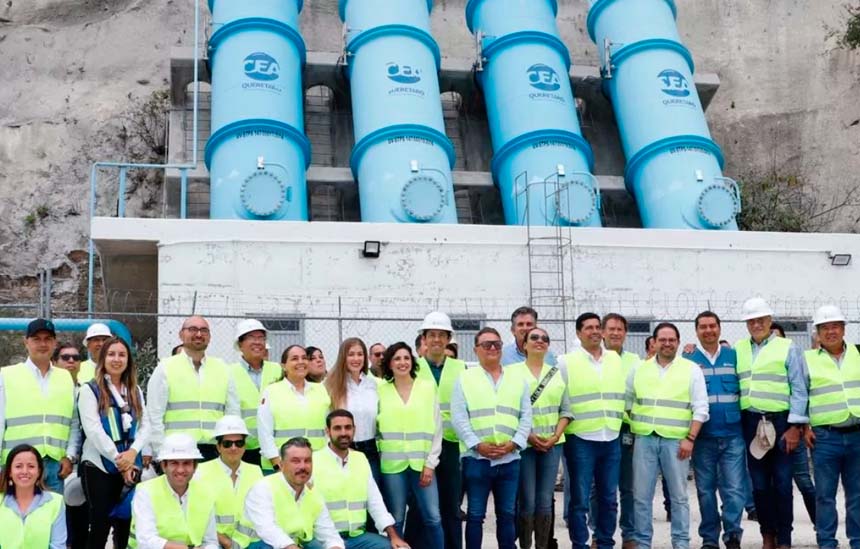- In 2003, the Spanish engineering multinational Ayesa supervised the construction of the Acueducto II project – a major engineering feat. Now, two decades on, the megastructure, which is 123 kilometers long, supplies clean drinking water to almost one million people in the Querétaro state. Ayesa marked their 20 year anniversary in Mexico with a visit to this iconic acqueduct, accompanied by Ayesa Senior staff and key representatives from the water sector.
Twenty years ago, Ayesa opened its offices in Mexico and has since become a leading engineering group in the country. In fact, Ayesa is now a Top 10 engineering design firm in the region of Latin America (ENR: 2023). The company’s first project win was Acueducto II, for which it provided technical supervision, construction, and commissioning of the Acueducto megastructure. This was one of the most important hydraulic works undertaken in Mexico.
On 6th July, to mark the 20th anniversary of Ayesa in Mexico, staff made a special visit to the aqueduct and were accompanied by key state water representatives including Luis Alberto Vega Ricoy, executive member of the CEA (State Water Commission) for Querétaro, Manuel Urquiza Estrada, an advisor at the Municipal Drinking Water and Sewage Board and Francisco Manuel González, Ayesa’s Country Manager for Mexico.
Acueducto II, which spans 123 kilometres (making it the state’s longest), dates back to 1738 and supplies water from springs in the Moctezuma River to 900,000 people in the state capital Santiago de Querétaro, and surrounding areas. The scheme’s water treatment plant features cutting-edge technology and supplies clean drinking water to all homes in the region. Not only does the scheme guarantee maximum efficiency in terms of water conveyance and energy usage, but its impact on the environment is minimal. The production capacity is around 1,500 liters per second and it overcomes a total height of about 1,200 meters from the diversion dam to the water treatment plant.
Ayesa’s presence in Mexico
Ayesa secured its first project in Mexico in 2003, by helping the State Water Commission (CEA) for Querétaro carry out an assessment of its water systems, which helped it become one of the country’s leading water engineering firms.
Over the past two decades, the company has branched into a number of different sectors, having participated in some of Mexico’s biggest engineering and technology projects. In relation to transportation, these include the intercity line connecting Mexico City and Toluca, the Tren Maya and Line 12 of the Mexico City Metro. Within the industry sector, it has secured contracts in the food and agriculture, chemical, oil & gas and renewable energy sectors, and in digital services and IT, it has digitalised processes and implemented innovative technology solutions by SAP for public and private entities.

